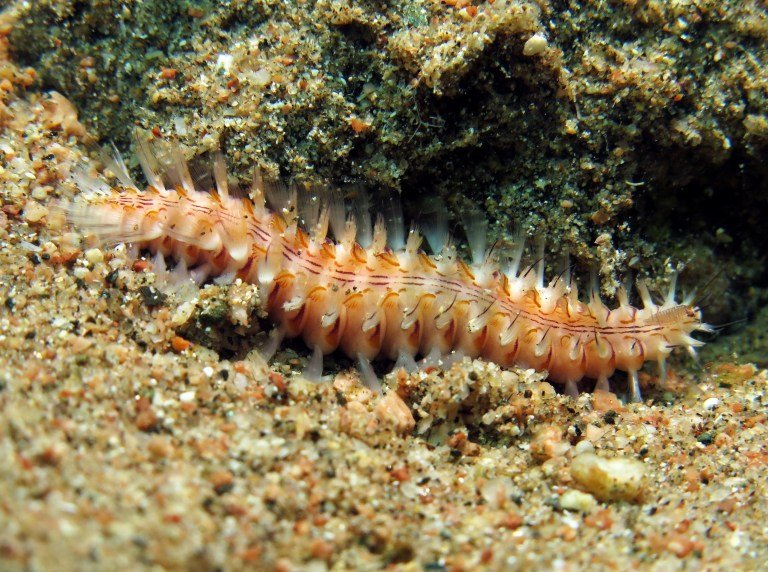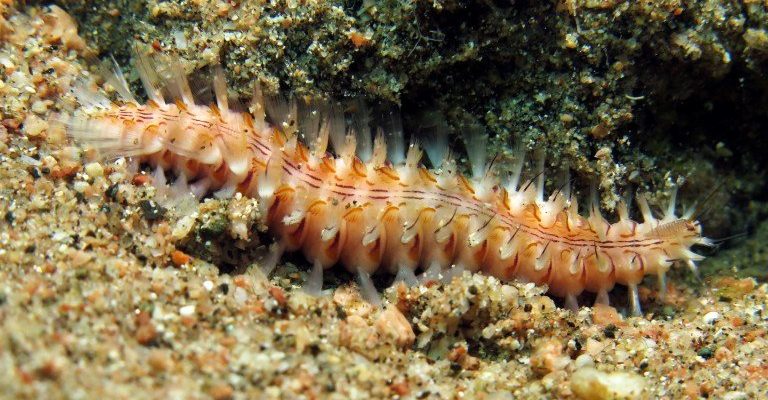
Bristle worms are part of a group known as polychaetes, which sounds a bit technical but essentially means they have many bristles (or chaetae) along their bodies. Found in various aquatic environments, these worms can range from quite small to impressively large. They play a crucial role in the health of your tank, acting as scavengers that help break down organic material. Understanding what these creatures eat can help you better manage their presence in your aquarium and ensure a balanced ecosystem for your fish.
What are Bristle Worms?
Bristle worms are segmented worms that belong to the class Polychaeta. They’re commonly found in marine environments but can also inhabit brackish and freshwater systems. You might spot them emerging from the substrate or lurking among live rock. Their bodies are long and flexible, often adorned with colorful bristles that can be quite striking.
There are various species of bristle worms, but most of them serve similar roles in their ecosystems. They are scavengers, meaning they eat decomposing organic matter. This can include everything from detritus and algae to leftover fish food. So, while they might look a bit alarming at first, they actually perform an essential service in keeping your aquarium clean.
The fascinating thing about bristle worms is that they have a unique ability to regenerate lost body parts. If a fish nibbles on a bristle worm and takes off a piece, the worm can grow it back. This resilience adds to their hardiness as a species, making them well-suited for various environments.
Do Bristle Worms Eat Fish Food?
You might be wondering whether bristle worms enjoy a diet of fish food like your finned companions. The short answer is yes, but it’s more nuanced than that. Bristle worms are opportunistic feeders, meaning they will eat whatever’s available, including fish food. However, they are not strictly reliant on it for survival.
When it comes to fish food, bristle worms are particularly attracted to sinking pellets and flakes that settle on the bottom of your aquarium. If you notice leftover food after feeding your fish, it’s likely these worms are munching on it. They play a role in breaking down this food waste, converting it into nutrients that can benefit your aquatic plants and other organisms in the tank.
That said, bristle worms don’t need fish food as their primary source of sustenance. They thrive on decomposing organic matter, which means they may also consume dead fish or plant material. This is where they shine as beneficial scavengers. Think of them as the cleanup crew of your aquarium, working to maintain a healthy environment.
Do Bristle Worms Prefer Live Prey?
While bristle worms can eat fish food, they also have a taste for live prey, particularly when the opportunity arises. In the wild, they can consume small marine organisms, including tiny crustaceans and even other worms. In an aquarium setting, they might target fish fry or other small creatures.
However, it’s essential to note that bristle worms usually don’t pose a significant threat to established fish. They are more inclined to take advantage of weakened or injured fish rather than actively hunting healthy ones. Still, some aquarium keepers worry about the size of their bristle worm population, as larger specimens could potentially harm smaller tank inhabitants.
Bristle worms are generally more interested in detritus and organic waste. But if you have a thriving ecosystem with plenty of food sources, they may experiment with live prey when it becomes available. This behavior highlights the adaptability of bristle worms as scavengers, capable of switching between different food sources depending on what’s accessible.
How to Manage Bristle Worms in Your Aquarium
So, you’ve identified bristle worms in your tank, and now you’re pondering how to manage their population. First off, it’s good to remember that these worms can be beneficial. They help keep the environment clean and can prevent the buildup of harmful waste. However, an overpopulation can lead to issues.
To manage bristle worms, consider the following strategies:
- Control Feeding: Ensure you’re not overfeeding your fish. Excess food can feed the bristle worms, allowing their numbers to spike. A good rule of thumb is to feed only what your fish can consume in a few minutes.
- Increase Clean-Up: Regularly vacuum the substrate and clean the aquarium. This minimizes the amount of organic material available for bristle worms to eat.
- Introduce Predators: Some fish species, like certain wrasses, enjoy eating bristle worms. However, be cautious, as not all fish coexist peacefully with worms.
By monitoring food input and encouraging healthy competition for resources, you can keep bristle worms at manageable levels while still benefiting from their scavenging capabilities.
Are Bristle Worms Harmful to Fish?
It’s natural to worry about the well-being of your fish when introducing new critters into their environment. As previously mentioned, bristle worms are generally not harmful to healthy fish. They primarily feed on organic waste and are more likely to scavenge than hunt.
However, there might be concerns with larger bristle worms, usually those that grow bigger than a few inches. These larger specimens can become more aggressive and may target weak or injured fish. If you notice any signs of distress in your fish, it might be wise to evaluate your bristle worm population and consider some removal methods.
In a balanced aquarium, bristle worms provide valuable contributions that outweigh potential risks. They help break down waste and contribute to nutrient cycling, making your tank healthier overall. Keeping an eye on their population should put your mind at ease, as most species are simply doing their job.
Bristle worms might seem a bit strange at first, but they play an important role in maintaining a balanced and healthy aquarium. They’re scavengers that eat everything from fish food to decomposing matter, which keeps your tank clean and thriving. While some may have concerns about their appetite for live prey, most bristle worms won’t be a threat to healthy fish.
By managing their population through thoughtful feeding practices and maintaining a clean environment, you can enjoy the benefits of having bristle worms in your aquatic setup. Think of them as the unsung heroes of your aquarium, tirelessly working to keep it looking great. So next time you see a wriggly worm, remember—it’s more than just a creature; it’s an important part of your underwater world!

